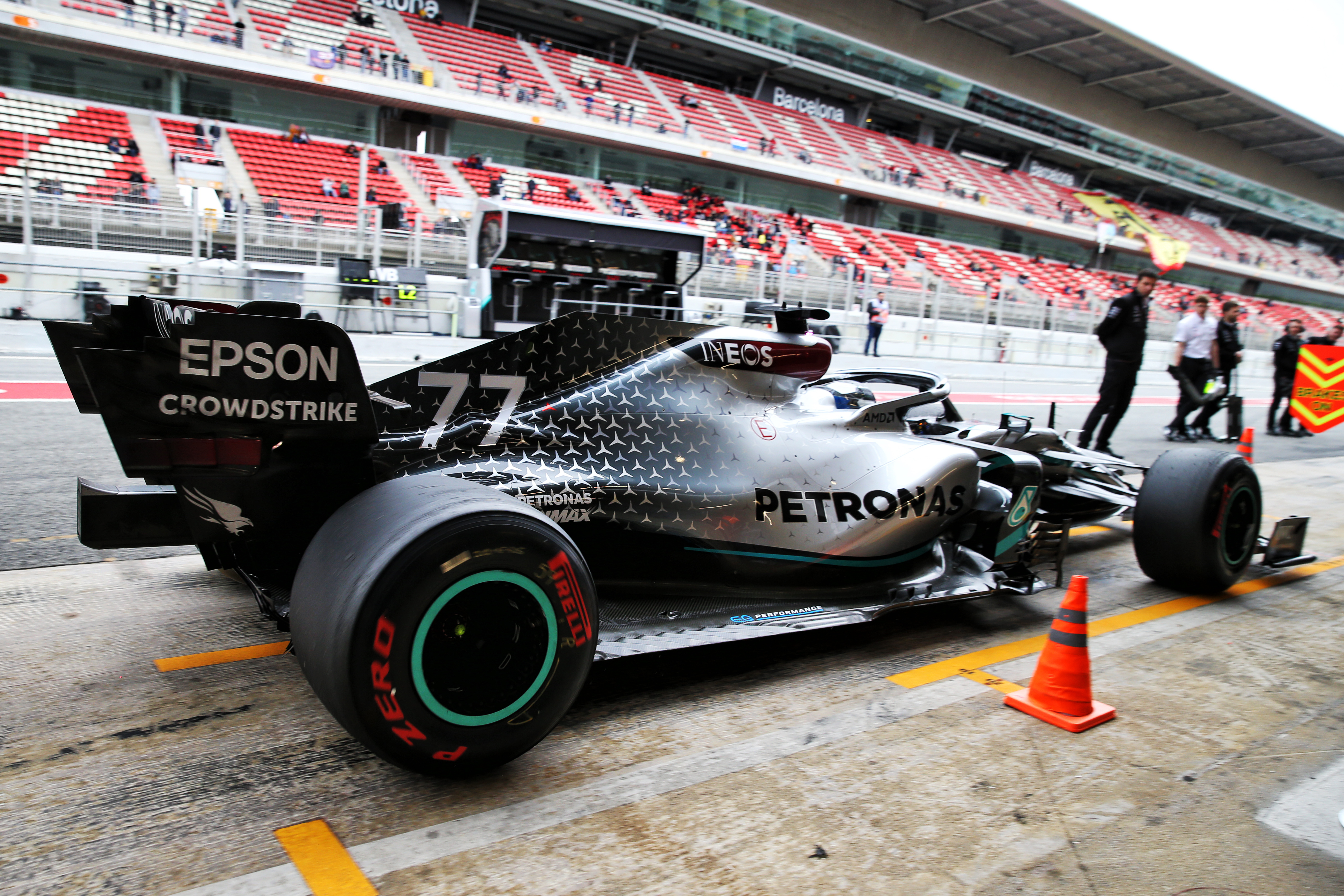Up Next

Mercedes’ adventurous rear suspension layout change on its 2020 Formula 1 car is as creative as its dual-axis steering system, says technical director James Allison.
When Mercedes launched the W11 in February, Allison was keen to highlight architectural changes that Mercedes felt would give it greater aerodynamic freedom, including at the rear of the car.
It has repositioned significant components on the rear suspension, effectively flipping the lower wishbone 180 degrees and placing the toe link in front.
“You just get to bathe every day in this sea of creativity that comes from hundreds of people” :: James Allison
Mercedes started its dominant title run by outgunning its engine rivals at the beginning of the V6 turbo-hybrid era, but it has also gone to great lengths to improve its chassis and aerodynamic performance, which has kept it on top.
It makes suspension changes when it can retain the same stiffness and kinematic behaviour, so any aerodynamic gains must outweigh the compromises they require.
The 2020 rear suspension layout, described by Allison as “adventurous” in pre-season, moves the angled leg of the wishbone into a less aerodynamically sensitive position by placing it behind two components that are 90 degrees to the direction of travel.
“The car is as beautiful a manifestation of 1000 people’s creativity and innovation as you could wish to have,” Allison said in an in-house Mercedes video.
“Although there are very eye catching and flashy things like the DAS on this year’s car, there is written through every part of the car’s substance there is innovation at every level.
“Just take our lower rear wishbone, effectively we swapped the front and rear leg round on the lower rear wishbone.
“It doesn’t garner much attention in the press because it’s not that dramatic visually, but by doing that you give a more clear run for the aerodynamicist to get high energy air down to a part of the car that loves high energy air.

“To do that, all of the people who work on the structural side of the gearbox and the suspension and the crash structures really have their work cut out to actually put together a layout of suspension that is kinematically good, and which is strong enough and stiff enough to retain the same sort of driving characteristics that we know works so well on the previous year’s car, despite the fact that a lot of the main forces are running down very different paths, through the legs, once you juggle them round like that.
“It required the skill of dozens of people to make that happen.”
Mercedes’ DAS system drew rave reviews in testing. It was spotted on in-car footage when Lewis Hamilton moved the steering wheel backwards and forwards and the toe angle of the front wheels changed as a result.
It was hailed as a supreme example of F1 innovation, but Allison reiterated that there are many less visible elements of the car that require the same creativity and effort.
“When I look at that rear lower wishbone, I’m every bit as proud of the team that was capable of creating that as I am of the equally clever and skilful engineers that put together the DAS package,” he said.
“And that’s just picking two things at random. The car’s covered in such stuff and I hope will be again in the seasons in the future.
“One of the lovely things about being in this sport is you just get to bathe every day in this sea of creativity that comes from hundreds of people, all focused on the same goal, which is creating the fastest car out there and fighting it to the front in the races.
“That is an exhilarating way to make a living and one which I’ve been really lucky to be part of.”
GARY ANDERSON SAYS

There always has to be a compromise when you are making suspension changes for aerodynamic reasons. The positioning of wishbones is primarily with aerodynamics in mind. But you must be very careful – the more you lift the bottom wishbone up, the higher the loads on it.
To resolve that, you make it heavier than it could be. So you have to ask if the overall aerodynamic gain is worth the other compromises.
Mercedes this year has changed the location of the bottom wishbone on the rear suspension by trying to get rid of the front leg that goes forward onto where the engine and gearbox meet the bellhousing.
That has quite a big influence on the airflow between the inside of the rear tyre and coke bottle bodywork.
You are allowed to change the leg profile to what they call a 3.5:1 aspect ratio. That means it can only be three and a half times the length of its thickness, plus or minus a certain angle.
There’s only a certain amount you can do with it. Getting it out the way completely and allowing more airflow is a big thing.
But it changes the loads a lot and you have to accommodate that and ensure things aren’t moving around more.
You only get a benefit if you aren’t compromising everything else. If you added 10kg in weight that would be a bad trade-off unless you are 10kg within the weight limit – which Mercedes won’t be.
It’s all about the trade-offs and Mercedes has been very good at that in this era.




